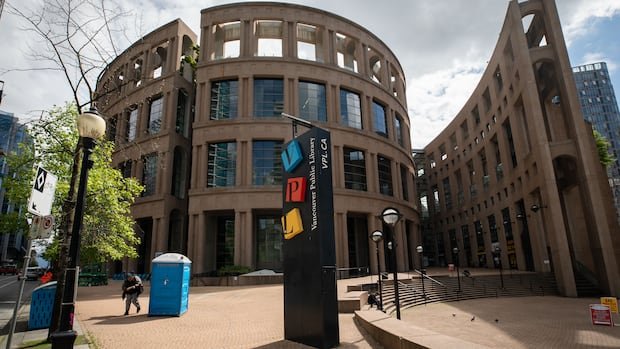For the first time in Vancouver Public Library’s history, digital file loans Materials such as e-books, e-magazines and music have outperformed physical copies in the library, although online facsimiles cost three to five times as much.
The milestone is a victory for accessibility, but it could exacerbate a current problem for libraries, which is being able to afford enough digital materials to meet demand and have significant collections of them compared to physical versions.
“At first it wasn’t that important simply because digital content wasn’t as popular then,” said Kay Cahill, director of collections and technology at the Vancouver Public Library (VPL).
“But the more it grows in popularity and the more… we allocate our fundraising budget to it, it becomes a bigger problem.”
In 2024, the library had 1.8 million items in its physical collection and around 696,000 digital items.
Digital versions of books have been in libraries like the VPL for at least 15 years, but the pandemic accelerated demand when residents couldn’t physically get to the libraries.
According VPL Annual ReportsThat demand has not decreased, it has only increased. The latest data shows that digital circulation increased by 16 percent in 2024 compared to 2023, while physical circulation decreased by 3.5 percent during the same period.
Digital versions cost more because of licensing agreements with publishers that require libraries to essentially rent the materials.
They pay for access to the book either for a set time limit or for a number of downloads, meaning libraries cannot own the title directly.
It has been a nationwide problem for many libraries, with the most public consequence often being long waits for digital copies of materials while budgets are managed behind the scenes.
According to the Vancouver Public Library Foundation, a print copy of Rebecca Yarros costs about $30, for example. onyx stormbut $85 for a digital version.
The charitable foundation, which raises about $2 million a year for the library, is campaigning for dedicated funding to help offset the demand on the library’s $65 million annual budget, of which only 8.5 percent is available for collections.
The vast majority of VPL’s costs are salaries and benefits, then its facilities, then its collections.
“Libraries pay much more for digital materials than individual consumers pay for digital materials, and they pay more for digital materials than for printed books,” said Jenny Marsh, executive director of the Vancouver Public Library Foundation.
“So, as the use of digital collections grows and the cost tends to be… higher, we’re seeing a big gap in VPL’s available budget for collections.”
Policy and financing solutions
In 2019, the Canadian Federation of Library Associations said urban public libraries were spending up to 30 per cent of their materials budgets on digital content. He is advocating for new government policies on the issue.
“This situation will deteriorate if the Canadian government does not take action to identify policy solutions that prevent restrictive licensing and pricing practices and encourage fair trade practices,” it said in a position statement.
In the fall, the Union of BC Municipalities also passed a resolution calling on the province to increase its share of core library funding from $14 million for the province’s 71 library systems to $30 million.
More than 90 percent of library funding comes from local governments, UBCM said.








